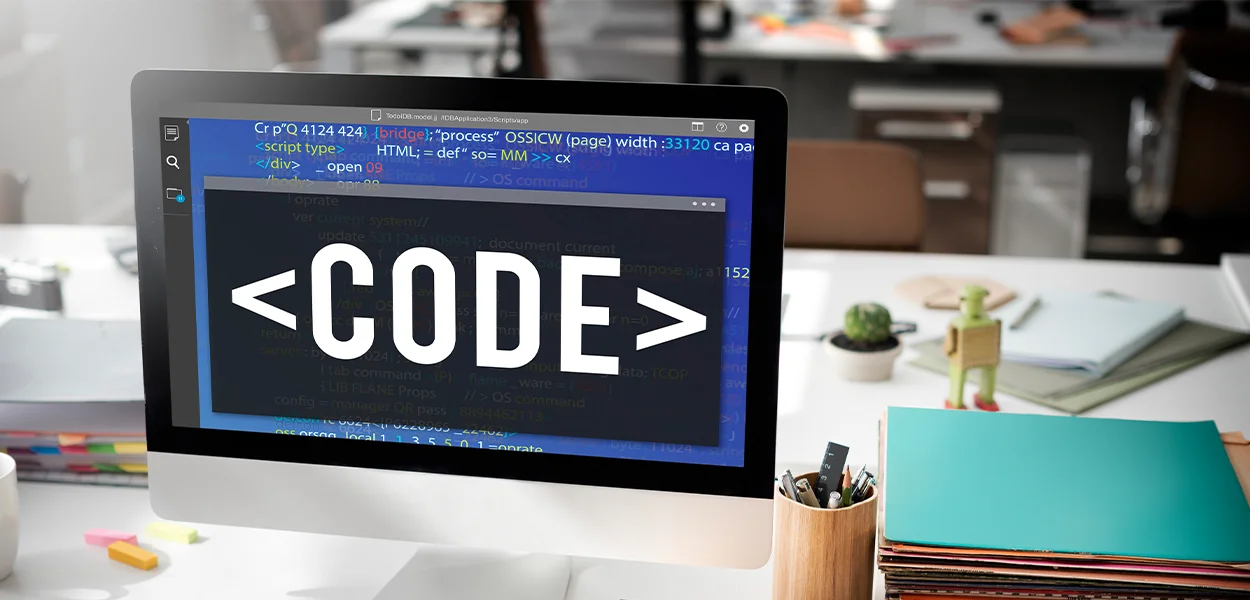Building a Hybrid Solution: The Best of Both Worlds with Low Code and Custom Code
Building a Hybrid Solution: The Best of Both Worlds with Low Code and Custom Code
Oct 04, 2023 04:44 PM
Building a Hybrid Solution: The Best of Both Worlds with Low Code and Custom Code
Oct 04, 2023 04:44 PM

The number of people worldwide with smartphone access has increased dramatically over the last few years. Smartphone usage is increasing, so the need for mobile apps is also increasing. Users utilize apps for smartphones for various reasons, such as entertainment, cinema ticket purchases, planning for the day, and shopping. Utilizing these mobile apps also aids in enhancing the working process by assisting teams and employees. This has led to an enormous market for mobile app development because they can satisfy people's needs by creating mobile applications.
A mobile app can be built through hybrid or low-code development methods. There are, however, certain similarities between these two phases of development. The advantages of hybrid application development and low-code development for mobile apps will be explored in this post. Let's discover the benefits of these:
The ability to create applications for business by those with no programming expertise is always the aim of development using low code. The difference between no-code and low-code has become less critical in the past year. Low-code frameworks now incorporate more useful no-code features to make developers more efficient. Some of these platforms are so easy for users, and the notion that citizen programmers can develop apps has developed from the notion that anyone could create an application. However, regarding developing apps, will low-code potentially be the most effective thing, or will it begin to fade away?
In software development, two buzzwords have been gaining significant attention in recent years: low code and no code. These innovative approaches promise to streamline application development, making it faster and more accessible to a wider range of individuals, including those without extensive coding expertise. Let's take a brief look at the key differences and similarities between low-code and no-code platforms:
Developer-centric: low-code platforms are designed to empower developers by providing them with a framework and tools to expedite application development. They typically involve writing less code than traditional development but still require certain coding skills.
Customization:Low-code platforms offer a degree of customization, allowing developers to write code when necessary to meet specific requirements or integrate with complex systems.
Complex Applications:Low Code is suitable for developing relatively complex applications requiring extensive business logic, integrations, or data manipulations.
Learning Curve:Although easier than traditional coding, low-code platforms may still have a learning curve, especially for those who are not experienced developers.
User-Centric:No Code platforms target a broader audience, including non-developers. They are designed to be extremely user-friendly and require little to no coding knowledge.
Visual Development:No Code platforms rely heavily on visual interfaces, where users can create applications by dragging and dropping elements and defining logic through simple, intuitive configurations.
Limited Customization:While No Code platforms are excellent for quickly building simple to moderately complex applications, they may have limitations for highly customized or complex projects.
Rapid Development:No Code lives up to its name by allowing users to create applications rapidly, often in hours or days, without writing a single line of code.
Speed and Efficiency:Both low-code and no-code approaches are known for accelerating the development process, enabling faster time-to-market for applications.
Accessibility:Both aim to democratize application development, making it accessible to a wider audience and reducing the reliance on a limited pool of skilled developers.
Maintenance:Both approaches simplify ongoing maintenance, as changes and updates can be made with minimal coding effort.
In summary, the choice between low code and no code depends on your specific project requirements, team expertise, and the level of customization needed. Low code suits more complex projects with developers who can leverage their coding skills. In contrast, No Code is ideal for rapid development by non-developers or for simpler applications. Ultimately, both approaches offer valuable tools for modernizing and accelerating the software development process.
The hybrid approach to development combines the best of two worlds. It takes advantage of the speed and ease of low-code platforms and allows for greater flexibility, power, and versatility in custom programming. This method is particularly effective when complex business logic or a unique function is needed.
Low-code platforms provide quick development capabilities, visual interfaces, and pre-built parts to speed up app development. When you start with a low-code base, it allows you to build the foundational features of your app, thereby saving time and energy. A recent IDC report revealed that customers made an annual return of 59% following five years of low-code technology and intelligent process automation.
Although low-code platforms offer flexibility, some situations require specific or intricate capabilities. Custom code lets you modify and enhance features of the application to satisfy those particular requirements.
As your application expands, you could face scaling issues using a low-code strategy. A custom-built code solution comes to your rescue, giving you the flexibility to handle the increasing volume of traffic, complicated workflows, and sophisticated data processing.
Integration with external systems or APIs is a typical necessity for many applications. Although low-code platforms provide already-built integrations, custom programming gives you complete control over the integration process. The security of the hybrid system is essential. This includes safeguarding your data and ensuring that it aligns with different rules and regulations.

Implementing a hybrid system requires meticulous planning and research. This means understanding your business needs, assessing your technical needs, and establishing targets and objectives.
Deciding whether to use low-code or choose to use custom-written code is a crucial choice. The adoption of agile development methods and lean prototyping will aid in ensuring an easy development process.
Automated testing Continuous implementation and deployment (CI/CD) and the testing of user acceptability (UAT) comprise essential components of the quality control procedure in the hybrid.
Tools for monitoring performance and data analytics can aid you in continuously improving and expanding your hybrid solution.
Combining low-code platforms with custom code, hybrid technology brings particular challenges and requires cautious navigation. Let's take a look at these challenges and solutions that could be possible:
Integration Complexity Integrating low-code components with custom code can be complex, especially when dealing with different technologies and systems. It is crucial to establish clearly defined integration protocols, define data exchange formats, and ensure seamless communication between the components. Standard APIs and integration frameworks can speed up the process and increase compatibility.
In a hybrid model, maintaining the quality of code becomes essential. The balance between low-code components and custom code demands constant code review, adhering strictly to coding standards, and applying rigorous testing practices. Consistent documentation and revision control for custom and low-code components helps maintain high-quality code and encourages collaboration between developers.
Hybrid development could require a wide range of skills. Developers require proficiency in low-code platforms and programming languages. The process of bridging this gap is complex. However, investing in education programs, cross-skilling projects, and knowledge-sharing platforms within the team of developers can help developers acquire the required skills.
Low-code systems have limitations, like limited customization choices or specific technical limitations. To overcome the limitations of these platforms, it's essential to recognize them early and determine if custom code is needed. A careful evaluation of the system's flexibility capabilities and options for customization can help you determine the time and place where a custom application is needed.
The adoption of a low-code platform creates the possibility of vendor dependence. It is essential to think about the long-term viability and support of your chosen platform. A contingency plan must be implemented in case of unexpected changes or the system's discontinuation. Examining the roadmap for vendor-customer support, roadmap, and community involvement can reduce the risk.
Regular maintenance and upgrades are essential if you're using a hybrid approach. It's crucial to track changes and patching for custom and low-code components. To ensure compatibility and resolve any conflict between the two, it is crucial. Establishing transparent maintenance practices that include regression testing and revision control can help maintain an up-to-date and stable application.
The hybrid method requires a certain level of technical proficiency and may require significant management changes. Utilizing third-party expertise, such as PerfectionGeeks, can help you overcome these issues.
There's a common misconception that zero codes or the absence of codes are not equivalent, but let us show the truth about them. Do not.
Platforms that don't need coding are created for those who aren't proficient in code. Declarative programming is utilized for No Code, and it's all about what you require and not how to achieve it. You tell the platform what you want, and it will build your requirements. Code provides instructions to inform platforms on attaining desired capabilities within traditional software applications. In the absence of code, the app developer states what the app does instead of how it performs.
People who are not tech-savvy can utilize low-code applications, but at some point, a developer is required to finish the task. Platforms with low-code code or solutions for rapid applications offer pre-built functions that let users create their apps to a certain extent before engaging the assistance of developers to write or edit the remainder. Developers can specify how they want to utilize the components in the platform.
Based on the specifics of an app's variety of features, very slight differences can be noticed between low-code and no-code. Some fundamental differences differentiate the style and the use cases for each platform.
App Creator: Any user can utilize no-code platforms. In contrast, low-code platforms are only utilized by developers proficient in coding languages and can work within the platform's limitations to accelerate the development process.
Core Design: No-code platforms typically employ a declarative, model-driven approach where users define an application's design by manipulating the drag-and-drop of the logic. Low-code platforms often employ similar methods of development. However, they rely more on manual coding to establish the fundamental design of an app.
User Interface: Many platforms that do not require code use an already-built user interface layer to make it easier to create programs. Low-code platforms can provide better UI flexibilities, but at the expense of more coding requirements.
Should the near future be a cause for concern, the hybrid low-code technology could catalyze a revolution in the app development field. Low-code development tools shouldn't be separated from IDEs. It is not a good idea to leave an IDE that is a low-code IDE to finish an application in a different IDE, and later, combining all the pieces of a unifying application can be a hassle. As you're aware, when a developer changes between different IDEs, the productivity of their work suffers. Low-code is seen as part of a more extensive development toolkit that is part of a hybrid low-code It's available when it's useful. However, developers aren't obliged to use it exclusively. They can import files from different languages, create hand-coded complex algorithms, drag-and-drop when necessary, and build all the elements in a web-based dynamic application with just a single click.
PerfectionGeeks Technologies will continue to come up with the most insightful content like this. Contact us for any questions or if you want to employ developers.
Strategy
Design
Blockchain Solution
Development
Launching
Testing
Maintenance
Contact US!

Plot 378-379, Udyog Vihar Phase 4 Rd, near nokia building, Electronic City, Phase IV, Sector 19, Gurugram, Haryana 122015
Copyright © 2025 PerfectionGeeks Technologies | All Rights Reserved | Policy
Contact US!

Plot 378-379, Udyog Vihar Phase 4 Rd, near nokia building, Electronic City, Phase IV, Sector 19, Gurugram, Haryana 122015
Copyright © 2025 PerfectionGeeks Technologies | All Rights Reserved | Policy